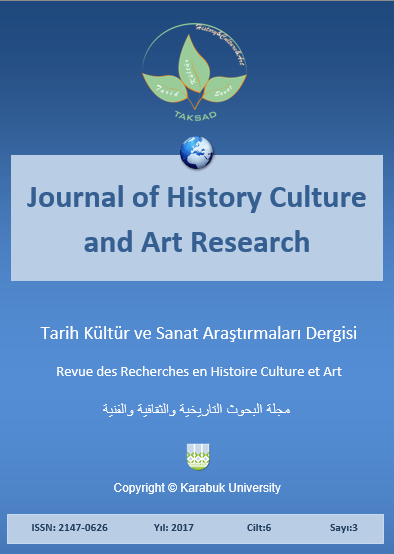The Effect of Balcony to Enhance Natural Ventilation in Local Houses in Mazandaran Province
DOI:
https://doi.org/10.7596/taksad.v6i3.959Keywords:
Natural ventilation, Vernacular architecture, Comfort condition.Abstract
Utilization of natural ventilation in buildings has a long history. Architecture has been trying to response to weather conditions all the time. Wind catcher, mashrabiya, portico and iwan are some examples of climate designs in vernacular architecture which have shown the importance of natural ventilation since a long time ago. The efficiency scope of natural ventilation when used with other cooling techniques will be more widespread. Today, designing desirable buildings using natural ventilation requires knowing theoretical foundations and a detailed study based on new knowledge regarding the feasibility of the use of components design and equipment related to natural ventilation. The present research aims to offer architects some design solutions in order to take advantage of natural ventilation in buildings using the vernacular architecture. Through matching features of functional spaces in local houses with climatic characteristics of regions around the Caspian sea (Mazandaran province) and determining the pattern used in these spaces in housing areas, the present study seeks to answer this question: “Are types of local houses in regions with moderate and humid climate in Iran (Mazandaran) consistent with regional climate in terms of patterns applied in internal functional spaces? How do regional climate features affect physical form of houses?”
The results show that there is a direct and consistent relationship between vernacular architectural features of Mazandaran province and climate classification and regional climate. It also enhances home comfort in summer and finally, it can be concluded that local houses are built based on the climate classification and environment context, and natural ventilation is the most important factor affecting the conditions which improve environmental comfort. The present research provides some guidelines for the architectural design of residential buildings in regions with moderate and humid climate with the aim of achieving maximum level of natural ventilation. Also, in order to exploit the potential of natural ventilation, the results of the research will help architect select optimal designing parameters in harmony with the regional climate.
References
Aminian, et al. (2009). Concepts and Definitions of Functional Elements and Spaces in Rural Housing of Persian Gulf, Abadi Quarterly Journal. No. 6.
Bakhtiar, et al. (2004). Sense of Unity. Tehran: Khak Publications.
Haeri, M. A. (2009). Research on Practical Use of Architecture of Historical / Traditional Houses in Modern Housing Design. Vol. 1 & 2, Tehran: Housing and Urban Development.
Javadin, et al. (2011). Grounded Theory and Atlas.ti, Tehran: Institute of Business Studies & Research.
Mahmoudi, A. (2014). Investigating the Importance of Porch in Iranian Traditional House. Tehran: Journal of Fine Arts, Tehran University Press.
Najafvand, Sh. & Heydari, Kb. (2017). Survey and Analysis of underground Concrete Structures Tunnel Doors, Under Explosive Loading. Journal of Innovative Research in Engineering Sciences. 3(1) 26-32.
Naseri, F.; et al. (2016). Effect of graphene oxide Nano sheets on the geotechnical properties of cemented silty soil. Archives of Civil and Mechanical Engineering, 16(4), 695-701.
Saremi, et al. (2007). Sustainable Values in Persian Architecture. Tehran: Cultural Heritage Organization.
Watson, et al. (1994). Climatic Design, Administrative and Theoretical Principles of Use of Energy in Building. Translated by Ghobadian, V., Tehran: Tehran University Press.
Downloads
Published
How to Cite
Issue
Section
License
All papers licensed under Creative Commons 4.0 CC-BY.- Share — copy and redistribute the material in any medium or format
- Adapt — remix, transform, and build upon the material for any purpose, even commercially.
Under the following terms:
Attribution — You must give appropriate credit, provide a link to the license, and indicate if changes were made. You may do so in any reasonable manner, but not in any way that suggests the licensor endorses you or your use.
- No additional restrictions — You may not apply legal terms or technological measures that legally restrict others from doing anything the license permits.







